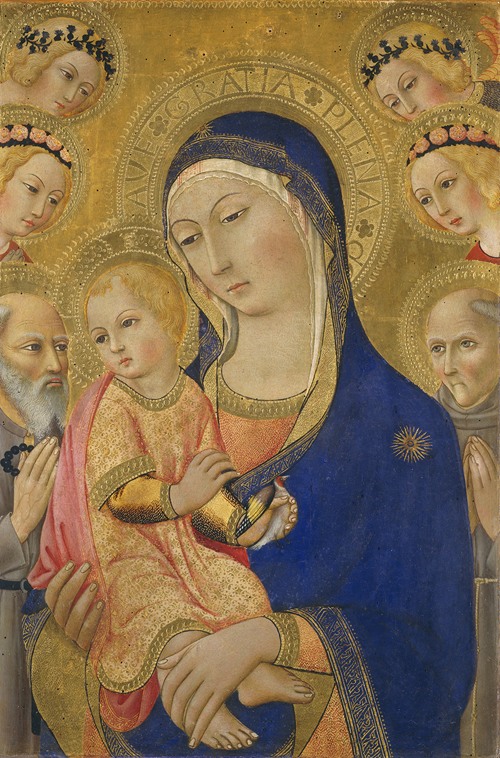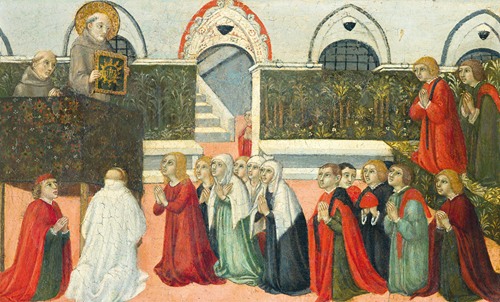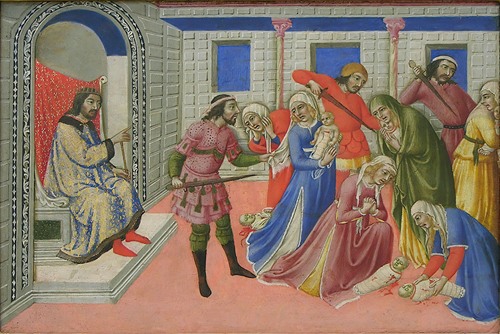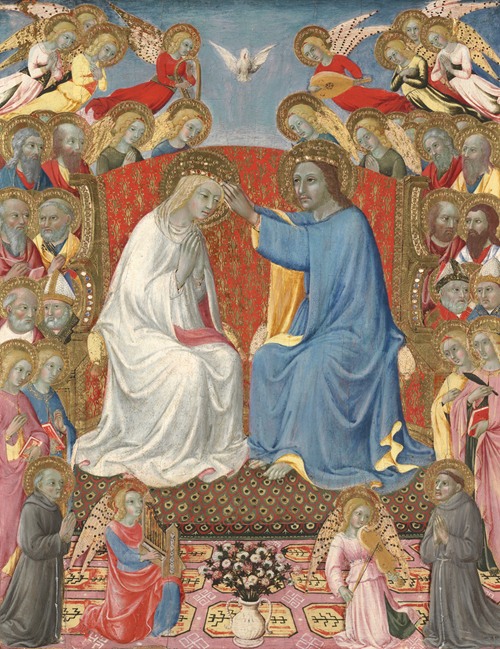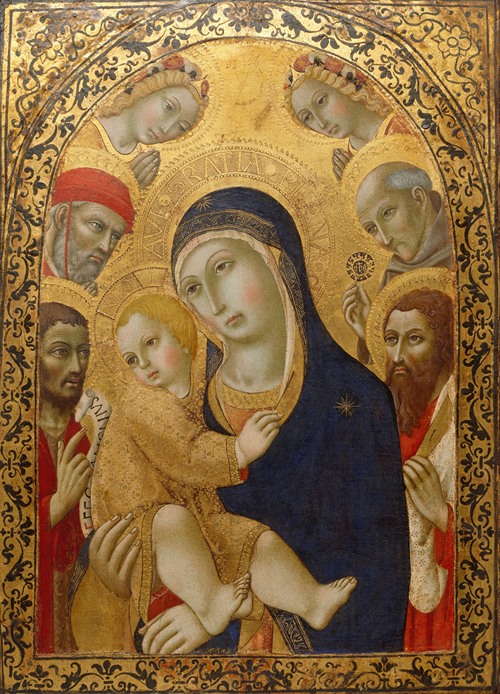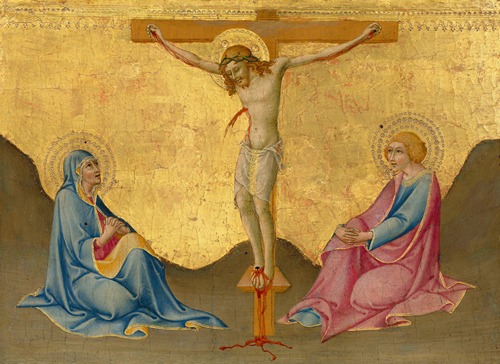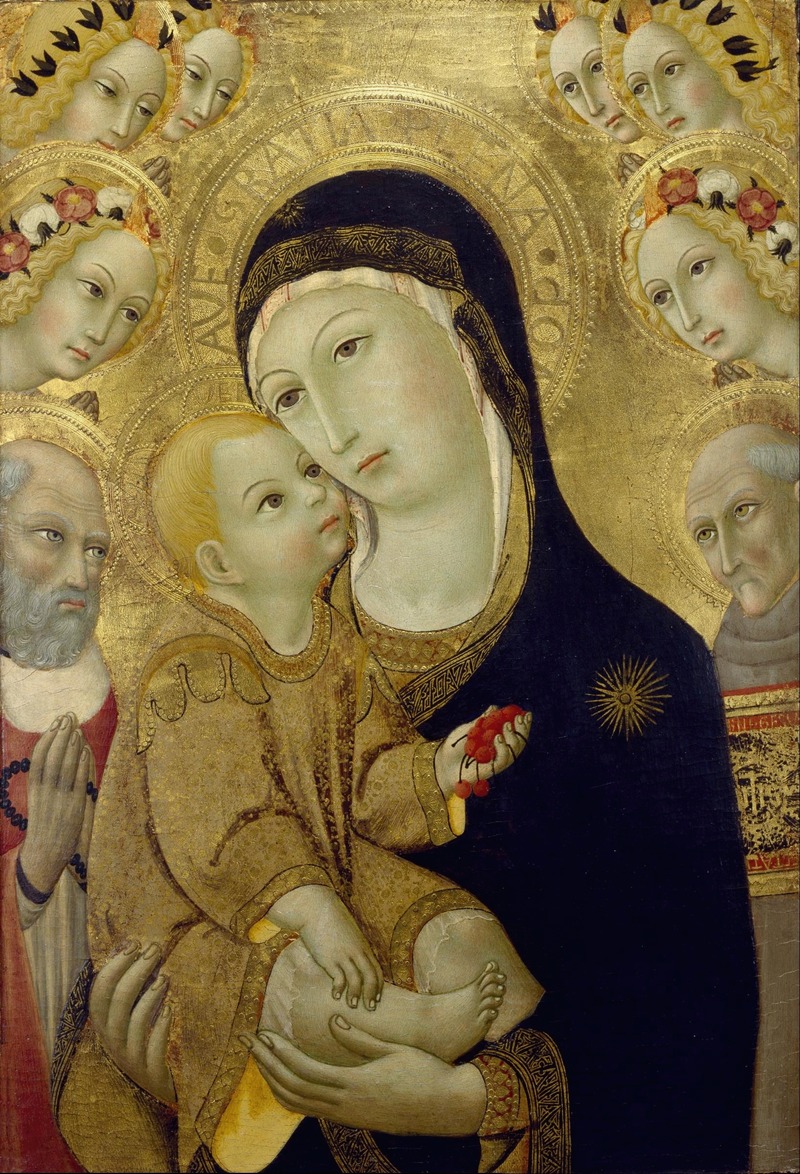
Sano di Pietro or Ansano di Pietro di Mencio was an Italian painter of the Sienese school of painting. He was active for about half a century during the Quattrocento period, and his contemporaries included Giovanni di Paolo and Sassetta.
Sano was born in 1406. His name enters the roll of painters in 1428 where it remained until his death in 1481. In addition to his own painting and overseeing the pupils and assistants in his workshop, Sano was also part of the civic fabric of Siena, in 1431 and 1442 he was the leader of the San Donato district of Siena. Sano was also employed as an arbitrator; in 1475 he was called upon to settle a dispute between fellow painters Neroccio di Bartolommeo and Francesco di Giorgio Martini.
It was, however, as a painter that he made his living. The workshop he ran produced huge number of artworks. He wasn't merely a painter of altar pieces. He also produced frescoes, miniatures, and book bindings. Sano died in 1481.
Sienese painting was said to personify dreams. This can be seen in the hallmarks of the style of the Sienese School. Above all, the Sienese painters were known for their vibrant colors. They routinely used hues never seen in paintings before and rarely seen outside the city. They employed a richness of detail that can be quite unsettling for the first time viewer. The draperies of the clothing are elegant and numerous, but it is the patterns of the fabrics and the details on the necklines that can leave the viewer breathless. The paintings are at once sumptuous yet ethereal. This lightness of being displayed in the figures and even the landscapes themselves is the final hallmark of a painting from the Sienese School.
In the 15th century in Siena as elsewhere in Italy and Europe the successful painter had his own workshop. In his workshop he oversaw assistants and pupils that helped him finish the commissions the painter had received. It is indicative of Sano's success that over 270 of his works survive. It is one of the paradoxes about di Pietro that because he was so successful he is often overlooked.
Sano's mastery of color is not in dispute. In a school of painting renowned for the use of color Sano stands out as one of the best. It isn't simply the number of color he uses, but the subtle interplay between them that makes him a master of his craft. Two of his paintings show off not only his mastery of color, but also his diversity as an artist.
The first of these is a polyptych made for the Church of the Gesuati. This painting is considered by many to be di Pietro's masterpiece. It is also the first piece that can be attributed solely to him. It is a riot of color. The central figure of Mary is clad in a blue robe whose folds seem to shimmer with intensity. This intensity radiates out through the figures on either side of her. What is most impressive is how the colors play off and complement each other. This is the control of a master.
The second painting is "St. Bernardino Preaching in the Campo of Siena." In 1425 St. Bernardino gave seven sermons a day for seven weeks in the town square (campo) of Siena. Sano commemorated this event in his painting. The painting depicts a vast crowd at the center of town. The crowd is so large it seems to fall off the edge of the painting itself. The red of the clothing of St. Bernardino's audience seems to draw itself towards the pink of the building. Instead of clashing, these two colors complement each other. The warm colors are balanced by the blues in the sky and the canopy, both of which bisect the painting. It is a delicate balancing act perfectly executed.
